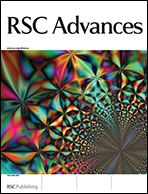Iron oxide (Fe2O3) is a promising substitute for other hydrogen storage materials, which can store/produce hydrogen by a reversible redox process (Fe3O4 + 4H2 ↔ 3Fe + 4H2O). In order to evaluate the effectiveness of iron oxide for this purpose, a series of Mo-doped iron oxides (Fe2O–5%Mo, –8%Mo and –10%Mo) were prepared by a hydrothermal synthesis. The catalytic effect of Mo cations on hydrogen production was investigated. The results show that the addition of an Mo ion to Fe2O3 could improve the hydrogen production in water decomposition at a relatively modest temperature (300–400 °C) and the Fe2O3–8%Mo sample was the most effective one. A reasonable explanation for this result is that the repeated change (Mo4+ ↔ Mo3+ + Mo0) of valence of the Mo ion during the redox process resulted in the change of composition and microstructure of the doped samples, which suppressed sintering. The apparent activation energy of Fe2O3 and Fe2O3–8%Mo at the H2 production step is about 55.5–65.3 and 36.2–45.2 kJ mol−1, respectively. The cooperative effect of Mo ions and active Fe on water decomposition is the main reason for lowering the activation energy, which was also the reason for enhancing hydrogen production.

You have access to this article
 Please wait while we load your content...
Something went wrong. Try again?
Please wait while we load your content...
Something went wrong. Try again?


 Please wait while we load your content...
Please wait while we load your content...